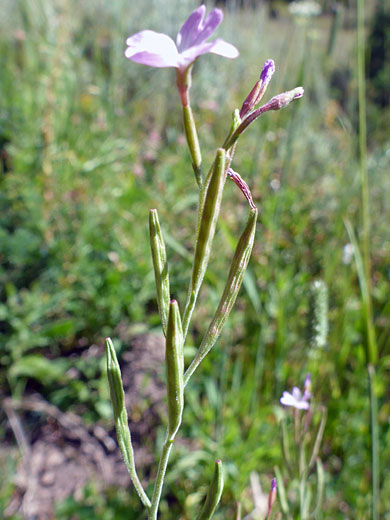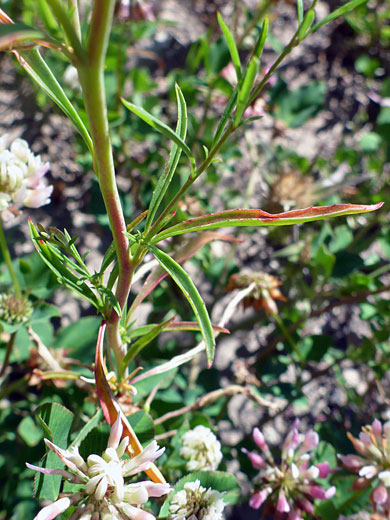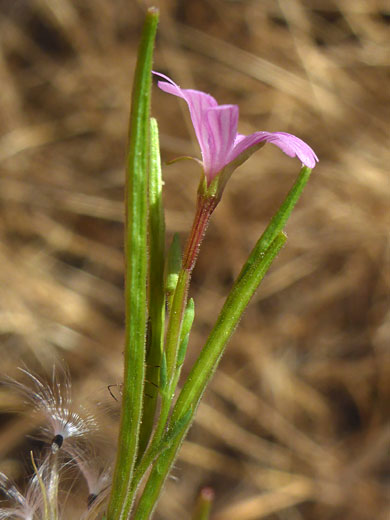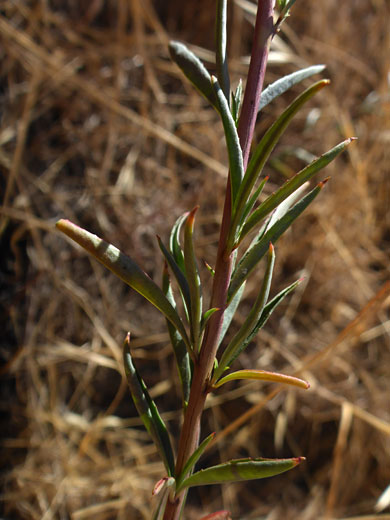Epilobium Brachycarpum, Tall Annual Willowherb
Plants > Wildflowers > Onagraceae > Epilobium Brachycarpum
Common names:
Tall annual willowherb, autumn willowherb
Family:
Scientific name:
Epilobium brachycarpum
Main flower color:
Range:
The Rocky Mountain states, parts of the northern Great Plains, and all states to the west
Height:
Up to 6 feet
Habitat:
Roadsides, grassland, woodland, disturbed ground; from sea level to 10,000 feet
Leaves:
Narrowly elliptic to linear, up to 2 inches long, with small edge teeth
Season:
June to October
Most species in this genus have oppositely arranged leaves, but those of epilobium brachycarpum are mostly alternate, and clustered; opposite only around the base of the stem. As the common name suggests, this is a tall species, sometimes exceeding six feet. Stems are hairless around the base, becoming glandular hairy towards the tip. The base of the stem may have peeling skin. Leaves are narrow, hairless, lined by a few small teeth, pointed at the tip, and often folded up along the midvein. Leaves are usually sessile.
The inflorescence is a narrow cluster, branched or unbranched. The four narrow sepals are about half as long as the four deeply notched, pale pink to purple petals, which are crossed by darker veins. The flower center contains eight stamens and a slightly longer pistil, topped by a white stigma that may be divided into four lobes. The fruit is a narrow capsule up to 1.2 inches long, hairy or glabrous.
The inflorescence is a narrow cluster, branched or unbranched. The four narrow sepals are about half as long as the four deeply notched, pale pink to purple petals, which are crossed by darker veins. The flower center contains eight stamens and a slightly longer pistil, topped by a white stigma that may be divided into four lobes. The fruit is a narrow capsule up to 1.2 inches long, hairy or glabrous.
All Contents © Copyright The American Southwest | Comments and Questions | Contribute | Site Map







